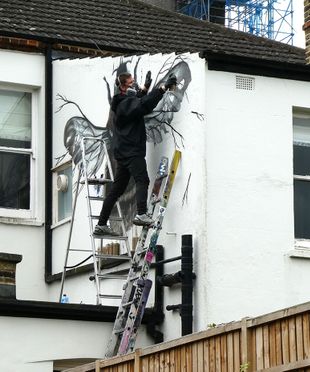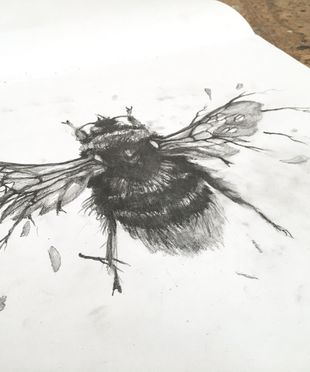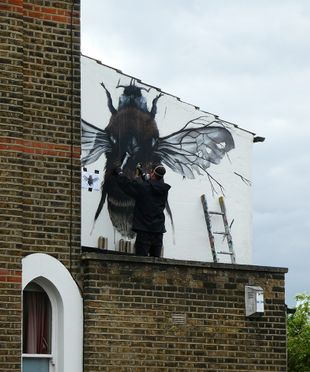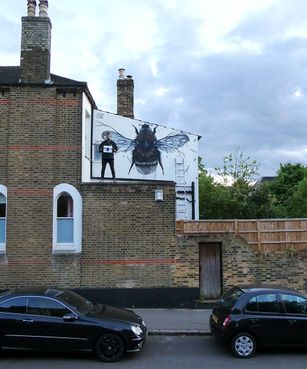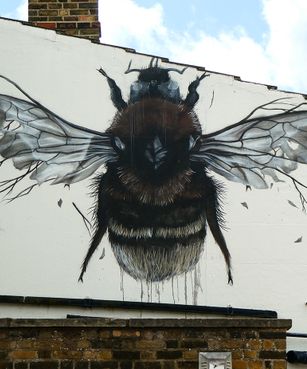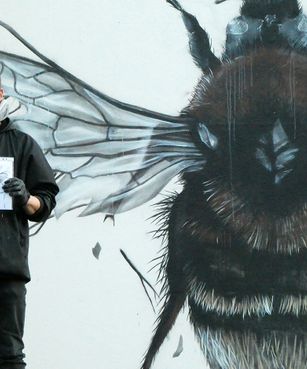QUEENS CROSSING
THE NORTH SEA
The Short-Haired Bumblebee Reintroduction Project is the worlds first attempt to re-implant a bumblebee.
This mural depicts a Swedish queen. The Short-haired bumblebee (Bombus subterraneus) is native to the UK. Its decline was the result of the loss of the species-rich grassland habitats on which it depends. It was last recorded in 1988 and was declared extinct in 2000, as it also is in many areas of central Europe.
A warm thank you to the organizers of the murals in Penge, Steven at London calling blog, Kevin and his dog Molly and John for inviting me, for their friendliness and help.
In 2011 brittish scientists came to southern Sweden to collect queens of the short-haired bumblebee. They had permission to take up to 100 queens from the local stock in the county of Skåne. This was part of a scientific project to re-implant the short haired bumblebee to the area of southern UK. The scientists traveled each spring to Sweden between 2011-2014, to collect upp to 100 queens each time.
I’ve painted this mural, Queens crossing the North sea, in Penge, London to highlight this unique project, the first to re-implant a bumblebee species. I also want to highlight the several hundred queens who where transported from Sweden to United Kingdom and the hard work of the scientists and volunteers. After over ten years since the start in 2009 the reintroduction program appears to have been unsuccessful. It is an example of the deep trouble our culture has brought us. The mural has the title Queens Crossing the North Sea. It is one example of way too many, when scientists and volunteers try to mend something in nature which has evolved and existed for millions of years and is important for the planets life supporting systems, until our culture, our way of life destroyed it.
Dr Nikki Gammans who’s co-ordinated the project said;
“The story of the Short-haired bumblebee reintroduction programme demonstrates how hard it is to bring back something once extinct. The best thing to do is to stop species from becoming extinct in the first place. We should conserve what we already have and work hard to prevent future extinctions by habitat restoration.“
I’ve read that London has the largest urban forest in the world. 8,6 million people and 8,3 million trees, almost one tree per person. 70% of the UK is covered by farmland, providing very little for native wildlife. The intensification of agriculture with monocultures sprayed with insecticides and herbicides makes the landscape uninhabitable for many insects and wildlife.
Agriculture, animal and dairy industry, wood plantations are means of domesticating nature. To produce much of a few things doesn’t promote biodiversity. Insekts need wildflowers and meadows to survive. They are important in the ecosystems in Uk, Sweden and the world. Insekts pollinate plants, plants are food for insekts and other insekts eat insekts so that the plants don’t take over. This is the base of life on land. It is a symbiosis that promotes diversity. Our way of life, the dominant culture promotes only one species, the homo sapiens.
A link for more about the shorthaired bumblebee reintroduction project:

